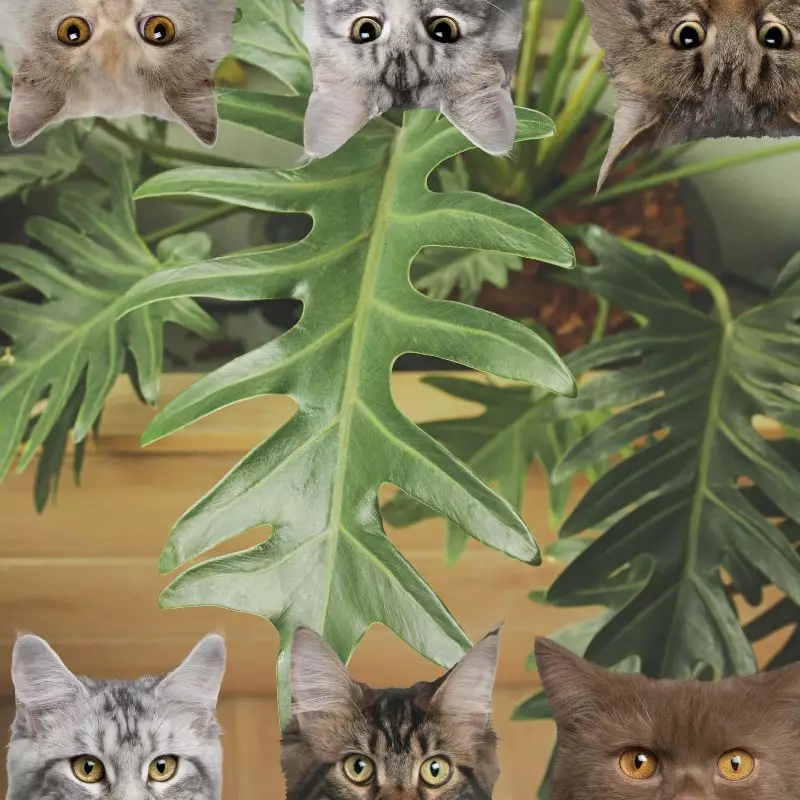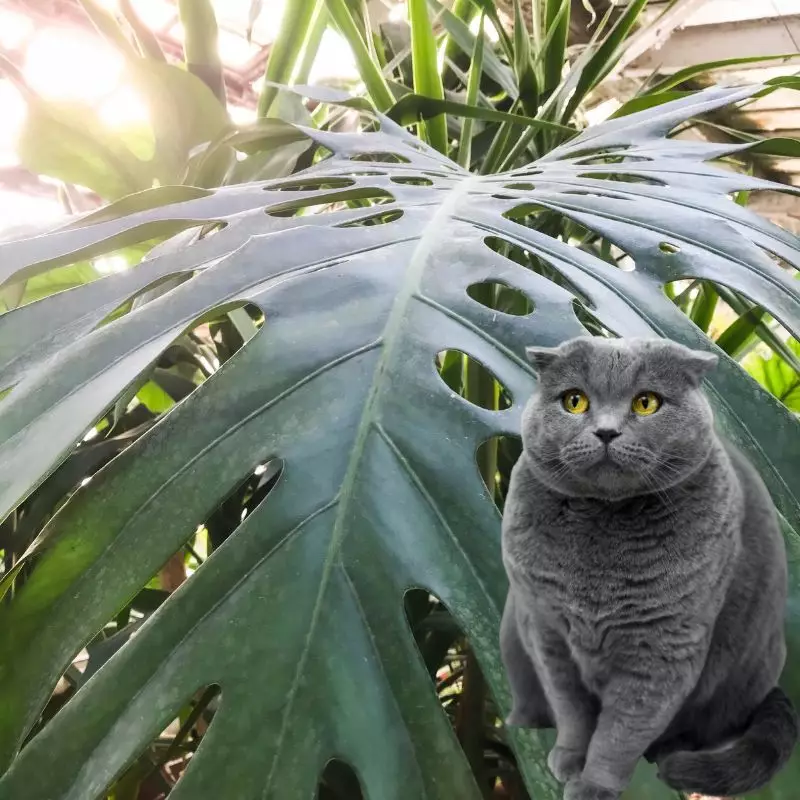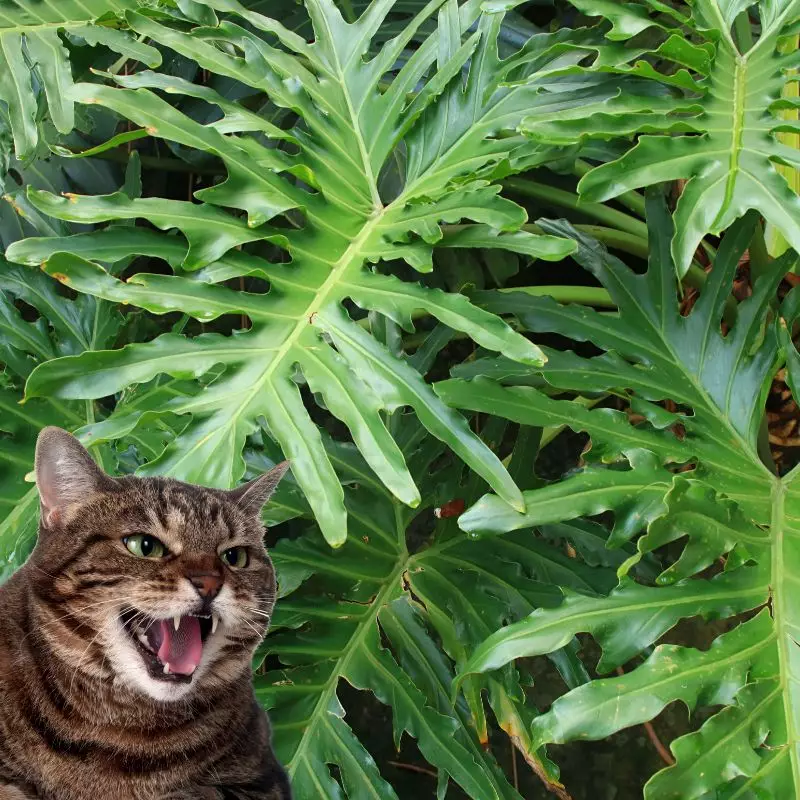Split Leaf Philodendron, alternatively known as Saddle Leaf Philodendron, does indeed pose a toxic threat to cats. This plant, along with other species in the Philodendron genus, contains insoluble calcium oxalate crystals. When cats chew or bite on this plant, it releases these crystals, leading to tissue penetration and discomfort in the gastrointestinal (GI) tract.
To ensure the reliability and accuracy of the information provided in this article, we collaborated with a team of experienced Doctors of Veterinary Medicine (DVMs). Their insights were invaluable, enabling us to offer precise and current knowledge about the potential risks linked with various plants, including the Split Leaf Philodendron, and their impact on feline friends. Furthermore, we have fortified our findings through extensive research on high-authority websites such as ASPCA and PetMD, ensuring comprehensive coverage on every plant discussed.
Clinical Signs of Split Leaf Philodendron Poisoning in Cats

Exposure to, or ingestion of, Split Leaf Philodendron in cats can result in a series of clinical signs due to the presence of calcium oxalate crystals, which are released when the plant is chewed or bitten. Below are the clinical signs, each elaborated to detail the underlying cause and manifestation in cats:
- Intense Burning Sensation: This primarily occurs in the mouth, throat, lips, and tongue due to the penetration of calcium oxalate crystals into the tissues, causing irritation and a burning sensation as they embed within.
- Excessive Drooling and Choking: The intense burning and irritation stimulate the salivary glands to produce excessive saliva as the body’s mechanism to ease the discomfort. The swelling and irritation in the throat can also lead to choking.
- Throat Swelling and Swallowing Difficulty (Dysphagia): The irritation and subsequent inflammation can cause significant swelling in the throat, impairing the cat’s ability to swallow.
- Severe Digestive Upset: In cases where larger amounts of the plant are ingested, the crystals can cause substantial irritation and inflammation throughout the gastrointestinal tract, leading to digestive upset characterized by vomiting and diarrhea.
- Extreme Difficulty in Breathing: The swelling and inflammation in the throat can potentially obstruct the airway, making it extremely difficult for the cat to breathe, and leading to rapid, shallow breaths or gasps (dyspnea).
These symptoms can persist for up to two weeks following ingestion, making it crucial to seek immediate veterinary care to alleviate the discomfort and prevent more severe complications. The manifestation and severity of these clinical signs can be highly variable, depending on the amount of plant material ingested and individual susceptibility.
First Aid and Treatment of Split Leaf Philodendron Poisoning in Cats

Your veterinarian may recommend plain yogurt for your cat. This allows your cat to begin to feel relief from the burning agony caused by the crystals embedded in his or her lips and face. Your veterinarian may give your cat intravenous fluid to help her rehydrate if she has had a lot of diarrhea and vomiting.
An antihistamine can help with any edema caused by the plant’s toxins. Kapectolin, which covers and protects the stomach lining, may be prescribed by your veterinarian for stomach distress. Sucralfate, which reacts with your cat’s stomach acids to produce a protective paste in her stomach, may also be given to her. If your cat has trouble breathing due to airway swelling, she will be observed until she is able to breathe normally again.
Recovery from Split Leaf Philodendron Poisoning in Cats

The prognosis is good, and the symptoms normally disappear within 24 hours with no long-term repercussions. A full blood count, biochemistry profile, and urinalysis can identify any concomitant diseases or disorders. Gastroprotective drugs may be prescribed for your cat to preserve the stomach lining. If your cat’s airway has enlarged sufficiently, he or she should be kept in the veterinary office for observation until the swelling goes down.
Prevention of Split Leaf Philodendron Poisoning in Cats
It’s preferable if you can find a high enough position for the plant to keep it away from your cats. Use floating pots, hooks, or floating shelves to keep the philodendron at bay. If you plan to leave the house for an extended amount of time, put your cat in a different room from the plant. This will keep the cat and the plant to be secure from each other.
If you love plants but have cats at home, check out these lists:





